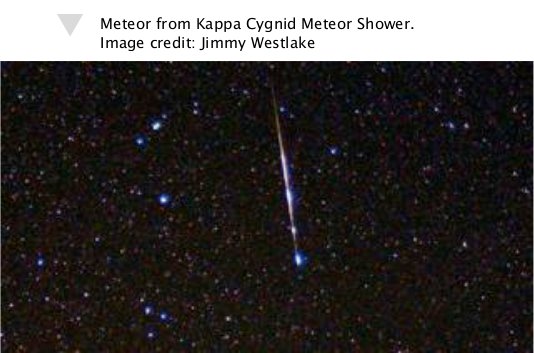Back Down2Earth Booklet - Meteorites
Click here for the PDF Download of this booklet
Next Chapter: Meteor Showers

'Shooting stars', or meteors are tiny bits of dust entering our atmosphere from space. Tiny particles, like grains of sand, crash into Earth’s atmosphere at 70 km per hour, between 50 and 100 km above our heads. The light we see is the glow of the heated air around them as they fly into the atmosphere and burn up.
Sometimes something a little bigger than a pebble will shoot through the atmosphere, and we see these as fireballs – if you are lucky enough to see a fireball then you might even see flames shooting from it. You can see video footage on the Internet of fireballs bright enough to cast shadows. But not to worry, fireballs are not dangerous – like shooting stars, they are high above us.
Occasionally, the bit of rock can be so big that it does not all disintegrate while entering the atmosphere - and it falls to the ground. We call these meteorites (while they are flying through the atmosphere as shooting stars we call them meteors, and while they are in space we call them meteoroids – it is important to remember the difference). A whopping 38,000 meteorites have been found on Earth so far, from all over the world, but most are found in the desert or in snowy Antarctica. This is because meteorites are dark rocks that stand out on the barren sand or snow.
Next Chapter: Meteor Showers


